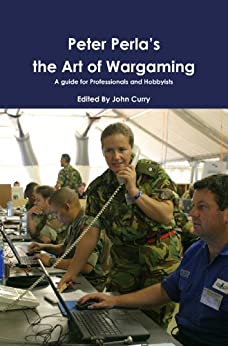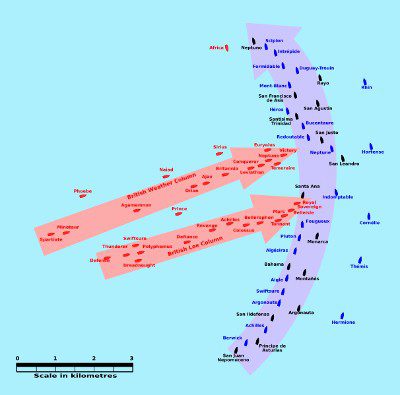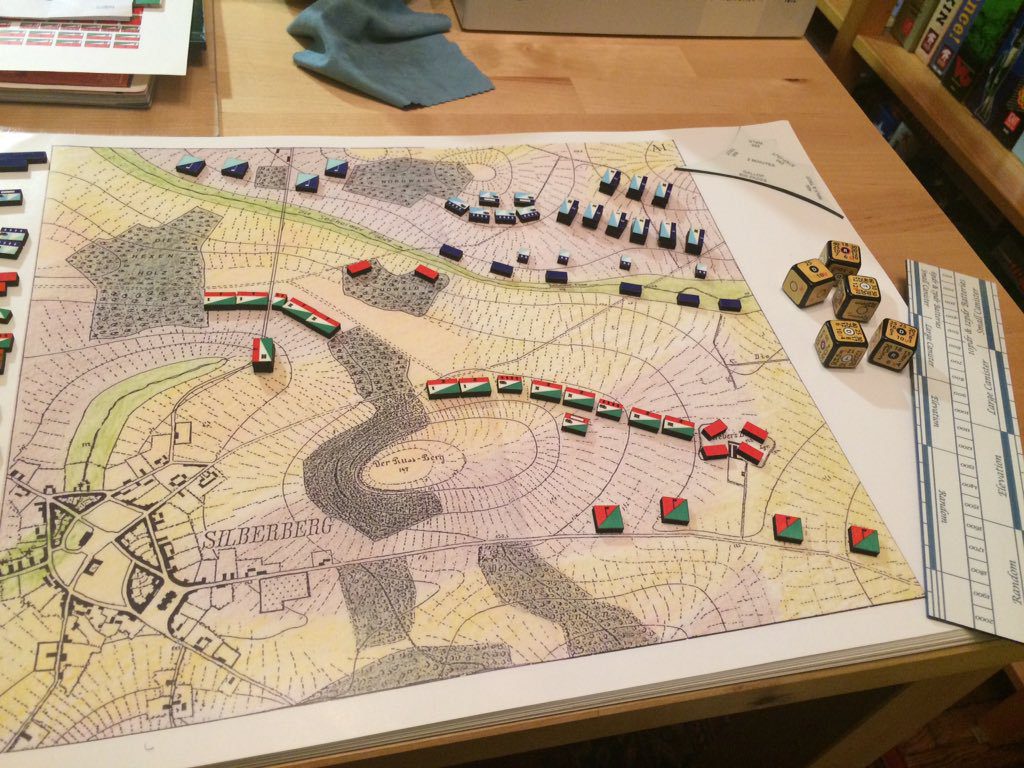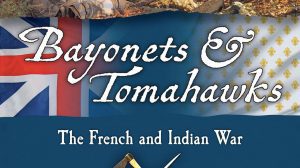The history of wargames is almost as old as history itself. In Part 1, we’ll look at the very first wargames, some of which are still played to this day. We’ll also see how these rather abstract depictions of warfare evolved over the centuries to become more realistic models of combat.
What is a Wargame?
Before we get to the history, what do we mean by “wargame”? It’s a simple question, but one that is bound to generate heated debate, especially among hobby wargamers. Some diehard grognards (literally meaning old guard, it originally referred to Napoleon’s Imperial Guard, but has been adopted by serious wargamers) take a very limited view of what constitutes a wargame. To them, a wargame must depict a historical conflict, or at most, a hypothetical conflict that could or might occur. In their world, fantasy or Sci-Fi themed games – even those that include warfare – are not wargames. Fantasy and Sci-Fi gamers obviously take a much more liberal view. There’s even some who don’t consider video games about war real wargames because they are not board games.
However, for our purposes I will use the construct defined by Peter Perla in his seminal book on the subject, The Art of Wargaming: A Guide for Professionals and Hobbyists. In it he defines wargames as, “A warfare model or simulation whose operation does not involve the activities of actual military forces, and whose sequence of events affects and is, in turn, affected by the decisions made by the players representing the opposing sides.” Therefore, military exercises and maneuvers are not wargames since these involve actual military formations. Instead, a wargame uses a model or simulation to represent military formations.

The other key aspect of Perla’s definition is that, “A wargame is an exercise in human interaction, and the interplay of human decisions.” Because no two human beings think exactly alike and each decision “affects and is, in turn, affected by” previous decisions, no two games will ever play out the same. As such, wargames do not provide rigorous statistically valid results. In other words, wargaming is not analysis. The results will vary every game session. It is this aspect that puts the “game” into wargaming. After all, who would want to play a game that follows a prescribed and unalterable sequence of events leading to a foregone outcome?
That is why this definition is equally applicable to both military professionals and hobbyists. Professionals use wargames as a teaching technique: to explore different doctrines, tactics, and strategies, to test out the potential impact of new weapon systems, and other practical reasons. Hobbyists use wargames for fun, intellectual stimulation, to learn about history, and to see how history might have played out differently.
Finally, note that we use the term “wargame” and not “war game.” This distinction is not trivial. As Perla points outs, a wargame combines realism (the war part) and playability (the game part) into a single whole. The Germans were the first to make this distinction, as we’ll see shortly.
In the Beginning
Archaeologists have found miniature soldiers in Egypt, Mesopotamia, and other parts of the world. Given the time, effort, and expense in creating these miniatures, these were most likely made for nobles and other wealthy patrons, not as toys for children (unless they were children of royal blood). These finds suggest abstract games representing warfare have been played for many centuries. It is not out of the realm of possibility that even before the use of detailed miniatures, pebbles, bits of bone, and even sticks may have been used to represent different types of units. So, we may never know the exact origin of wargaming.

Our modern game of Chess is believed to be based on a much older Indian game, called Chaturanga, that surfaced around the 6th century AD. It used pieces representing elephants, infantry, and cavalry that maneuver on a square board and used dice to determine the outcome of battles. The game of Go is even older. Believed to have been invented over 2500 years ago in China, some credit Sun Tzu, author of The Art of War, as its inventor.

Regardless of its origins or whether the playing pieces were smooth stones or intricately carved miniatures, ancient wargames appear to have been largely abstract representations of warfare. That is, the pieces did not behave like their real-world counterparts. For example, take how the knight moves in Chess. A real mounted knight could move in many different directions, not just in an L-shaped maneuver. Likewise, the boards were simple grids that did not impose the difficulties of real terrain features (forests, rivers, mountains, etc.). It was not until the 17th century that this added realism was introduced.
Evolution from Abstract to Realistic
The “King’s Game” or Koenigspiel was invented by Christopher Weikhmann in 1664. It was one of many “war chess” games that surfaced around the same time. Although the boards were larger and used more and varied types of pieces, they were still very much like Chess.
Over a century later, a game appeared in 1780 that introduced three innovations that are still central concepts used in wargames today. Designed by Johann Christian Ludwig Hellwig, an entomologist of all things, he was an advisor to the Duke of Brunswick. He called his game “Versuch eines aufs Schachspiel gebaueten taktischen Spiels von zwey und mehreren Personen zu spielen” (“Attempt to build upon chess a tactical game which two or more persons might play”).

What were these three innovations? The first is the concept of aggregation; that is, using a single playing piece to represent a large military formation (e.g., a battalion, regiment, or brigade) rather than a single soldier or horseman. The second is a board that uses multiple different colors to represent different types of terrain. Blue squares represented water, dark green squares forests, red squares mountains, etc. And the third is the introduction of an umpire to supervise game play and adjudicate disputes. Although it does not appear that Hellwig invented these concepts, it was he who first combined them into a single game. Others copied these concepts in other versions of the game which spread across Europe. Mostly played by the nobility as a pastime, it does appear they were also used as a form of instruction on the principles of warfare.
About the same time, John Clerk, a Scotsman, developed a system for simulating naval combat. Clerk was a merchant and never served a day in the Navy. However, he met a retired naval officer, Commissioner Edgar, and their discussions of the battles Edgar fought in led to Clerk’s An Essay on Naval Tactics, Systematic and Historical. Published in 1790, among other things it describes the heretofore untried tactic of “cutting the line.” Prevailing naval fleet strategy at the time was to sail a line of ships parallel to an enemy fleet so all ships could fire full broadsides at the opponent. Of course, the opponent could do the same. Cutting the line involved sailing perpendicular to the enemy’s line of battle, thus cutting it into smaller pieces which could then be defeated in detail.

Clerk’s method for representing naval combat used small wooden models that were maneuvered over a flat surface. Using geometry and mathematics, he simulated the effects of the wind, current, and each ship’s maneuvers to determine their relative locations. He combined this with a mathematical description of each ship’s firepower to determine the outcome of each engagement. Although more simulation than game, Clerk’s system attempted to realistically portray naval warfare. More importantly, it had practical benefits. For example, Admiral Horatio Nelson employed the tactic of cutting the line to defeat the combined French and Spanish fleet at the Battle of Trafalgar in 1805.
On the Road to Kriegsspiel
Once again, Germany was to originate the next evolution in wargaming. Johann Georg Julius Venturini published Neue Kriegsspiel or the “New Wargame” in 1797. The board was similar to Hellwig’s game. It used colored squares to represent different types of terrain, but it was significantly larger – around 3,600 squares compared to Hellwig’s 1,666 squares. Not only was the board larger, but each square now represented one square mile of real terrain – the border between France and Belgium. This is the first time a game’s board did not depict an abstract landscape, but a real location.
Another refinement made by Venturini were the playing pieces. In addition to combat units, other types of supporting units and equipment, such as fortifications, supply depots, artillery, and supply wagons, were represented using pieces of varying sizes and shapes. In other words, logistics had been introduced to wargames for the first time. The game also added realism to the movement of the playing pieces by limiting them to what was typical of actual troops. It even included restrictions for moving during the winter. Here, for the first time, we see a game that was designed not as a pastime for wealthy aristocrats, but specifically for the military to use for training and exploring tactics.
A Prussian by the name of Georg Leopold Baron von Reisswitz expanded on Venturini’s system. Reisswitz’s game dispensed with squares altogether. Instead, the board consisted of a sand table representing lifelike terrain. The playing pieces were wood squares that used symbols to represent different types of units. How far a unit could move was regulated by sticks or strings of set lengths. As luck would have it, Reisswitz met a Prussian officer who was instructing Prince Friedrich and Prince Wilhelm in the art of war. After mentioning Reisswitz’s game, the princes requested a demonstration and were so impressed that they told their father, King Friedrich Wilhelm III.
In 1824, Reisswitz’s son, Georg Heinrich Rudolf Johann von Reisswitz, further refined the design. Instead of a sand table, it had paper maps like those used by the Prussian army. The Prussian (i.e., friendly) units were painted blue and the enemy units were painted red, a convention that is still used in professional military wargames today. It also used specialized dice to determine combat results and casualties, but also had umpires. The umpires had several duties. For example, each side would submit orders to the umpires and they would only put pieces on the board when they judged the two sides could see each other. They also determined when one side achieved a victory.

Upon seeing a demonstration, General Karl von Mueffling, chief of the Prussian general staff said, “It’s not a game at all! It’s training for war. I shall recommend it enthusiastically to the whole army.” Indeed, he was instrumental in getting a royal decree issued directing every regiment in the Prussian army to play the game. Although it had some detractors within the officer corps, many enthusiastically accepted it. In fact, it was so popular that wargaming clubs were formed all over the country.
Over the years, Prussia (and later Germany) developed numerous variations of Reisswitz’s system. Many credited Prussia’s adoption of wargames as one of the keys to their victory over the French in the Franco-Prussian War of 1870-1871. This success prompted many nations in Europe, the United States, and Japan to adopt Kriegsspiel or variations of it. Wargames were also the genesis of the Schlieffen Plan – Germany’s invasion of Belgium and France at the outset of World War I. Note also that by this time, the term “Kriegsspiel” (wargame) is being used universally to refer to playable, yet realistic, depictions of warfare. In other words, wargames were recognized as a new type of game distinct from the abstract strategy games, like Chess, from which they evolved.
Setting the Stage for Modern Wargames
By the beginning of the 20th century, what had been largely an enjoyable pastime had evolved into quite detailed simulations used primarily by military professionals to both plan future operations and train their officer corps. Games like Chess and Go were still played. There was even non-professional interest in these new wargames, but the games were just too expensive and unwieldy for most people. However, that would soon change with the introduction of games that were accessible to those of even modest means and eventually give birth to the wargaming hobby. We’ll pick up the rest of the story in Part 2.
Sources:
-
Peter Perla, The Art of Wargaming: A Guide for Professionals and Hobbyists, second edition, 1 Feb 2012, edited by John Curry
-
Milan Vego, German War Gaming, Naval War College Review, Autumn 2012, Vol. 65, No.
-
https://en.wikipedia.org/wiki/John_Clerk_of_Eldin
-
https://en.wikipedia.org/wiki/Johann_Christian_Ludwig_Hellwig
-
https://en.wikipedia.org/wiki/Georg_von_Reisswitz











I have wargamed now for 58 years, my usual opponent has played about the same. We have gamed every period, type, scale including fantasy, sci-fi and what ifs. Also being forces retired uk, and written defensive and aggressive scenarios. I am currently looking at writing a book on my opponents and my gaming history covering a total between us of around 117 years. Thinking of calling it “Anything but a one!!”
I was hoping for any advice on the subject of writing such. Thank you.
Greetings Chris. First, I’m humbled you would ask my advice on writing a book, even if it is on a topic that’s been nearly a lifelong interest of mine. That said, all I can suggest is to write from your heart. Passion about your subject matter can help draw in your readers, and I would argue is more important than head knowledge. Of course, you should make every attempt to be accurate. But I’d personally rather read something that evokes excitement than a dull litany of boring facts.
Beyond that, all I can say is have fun while you’re doing it and don’t hesitate to get others whom you trust to review what you’ve written. It’s so easy to overlook what may seem obvious to you, but it might sail right over the head of your readers.
Best of luck!
Dave